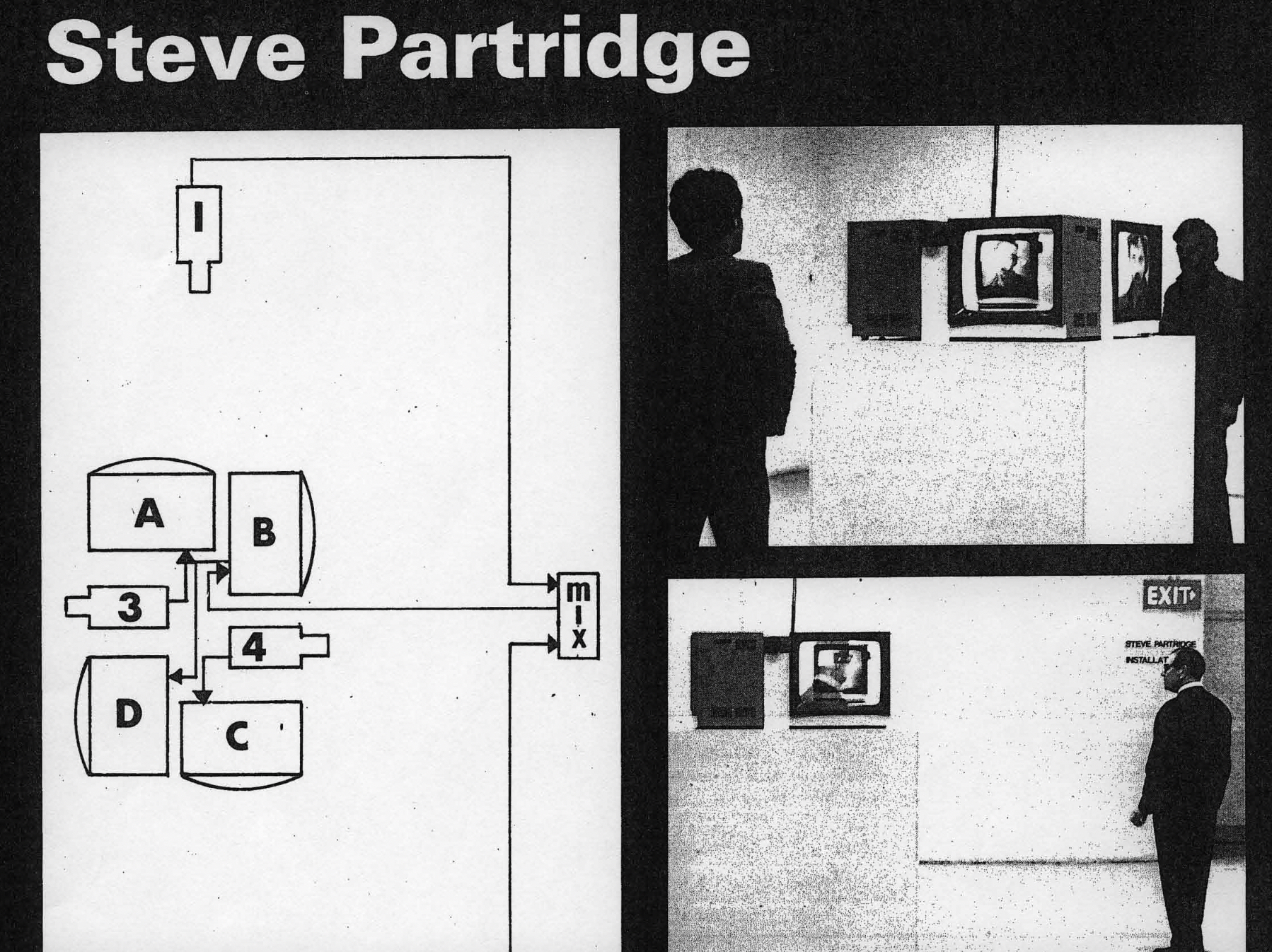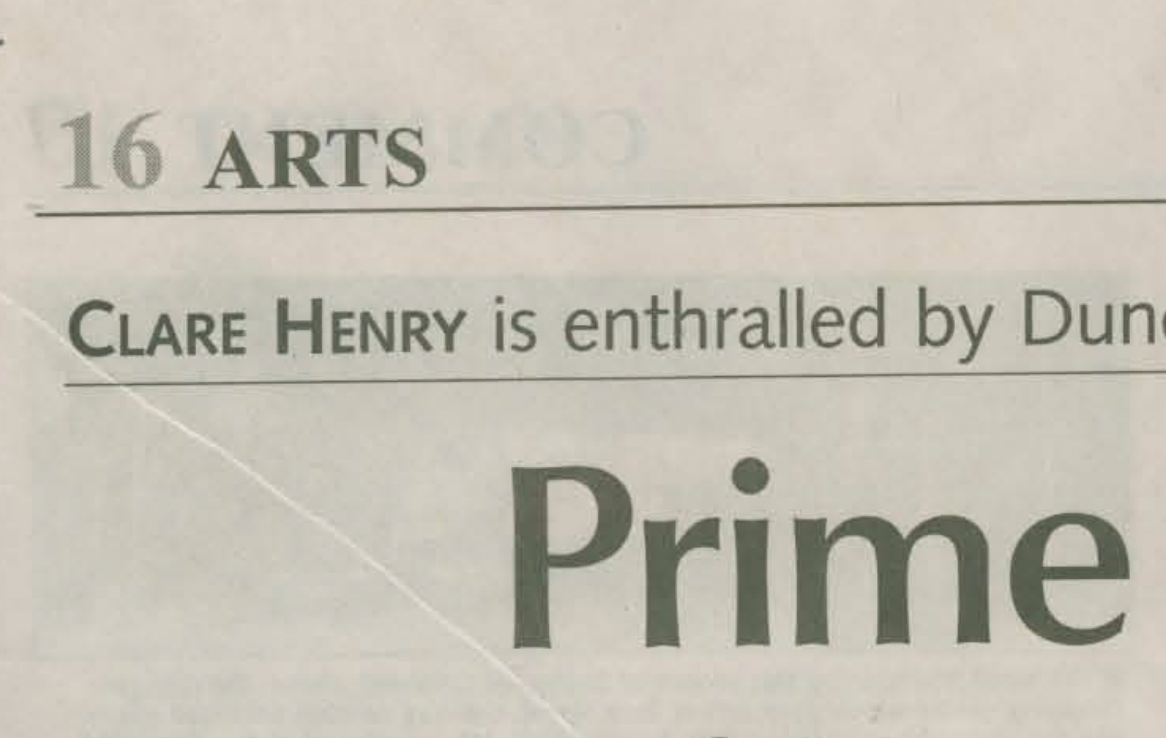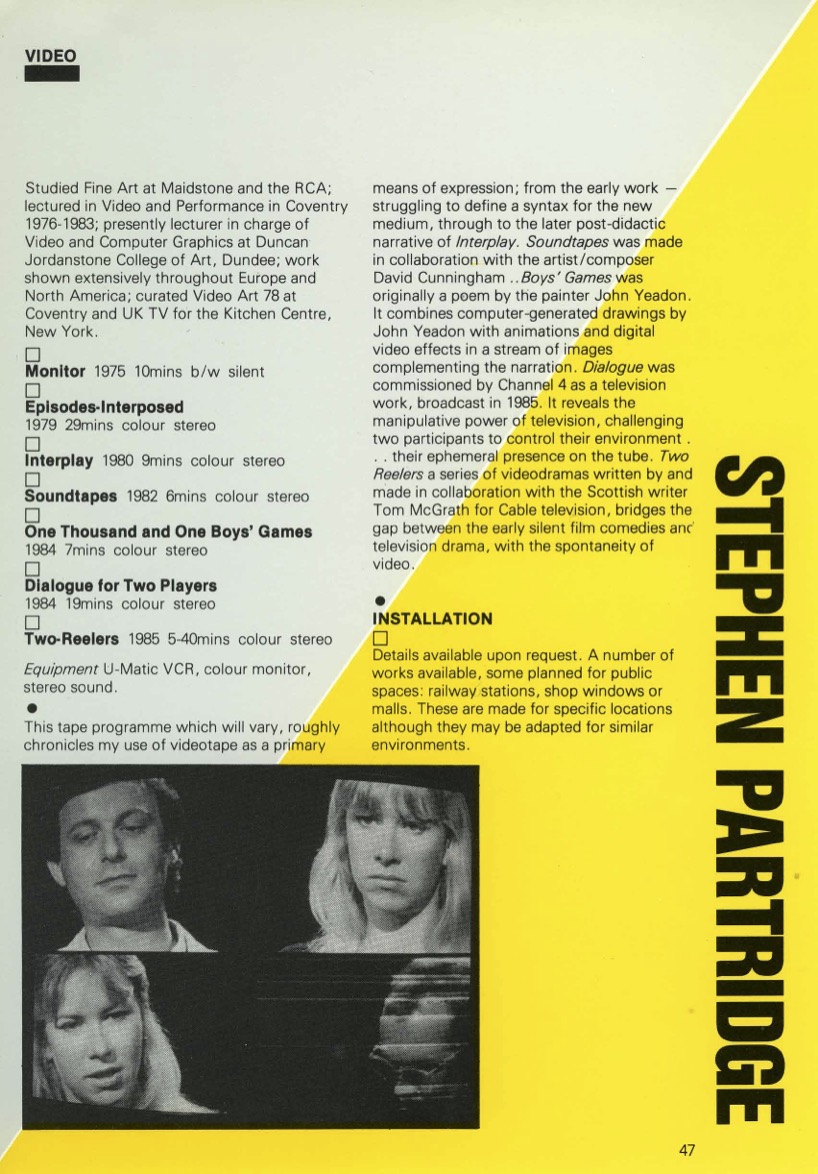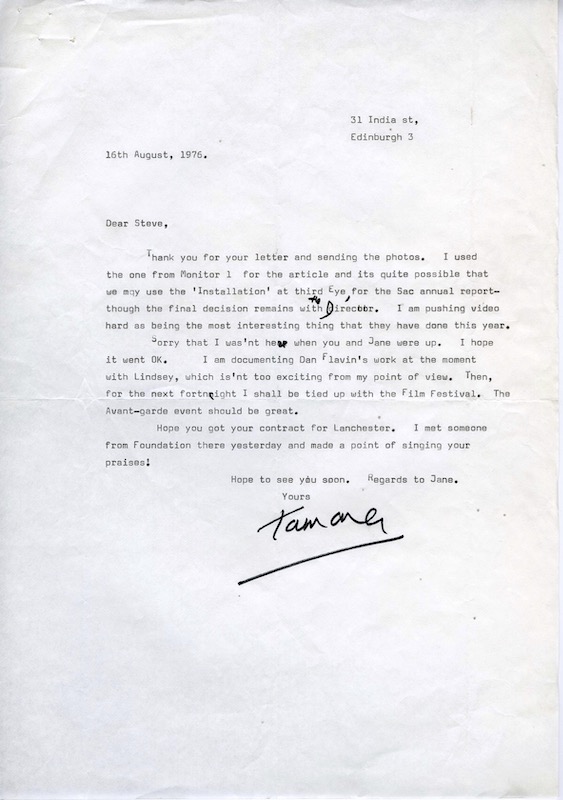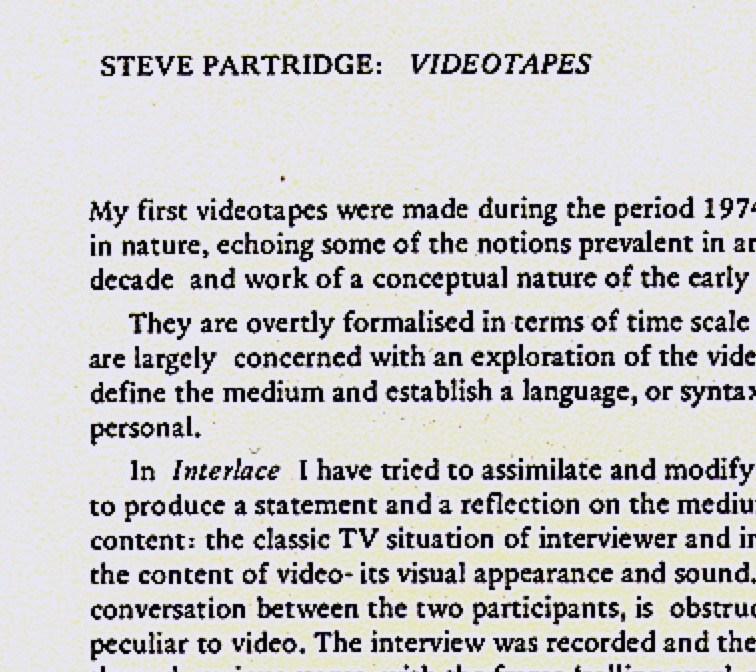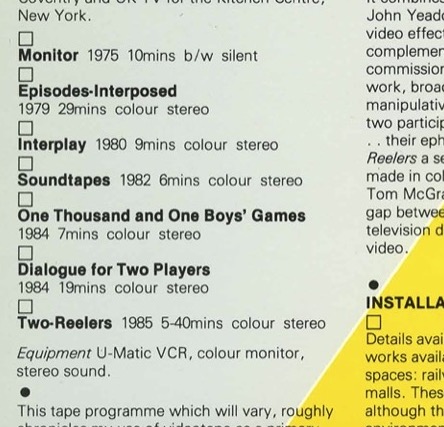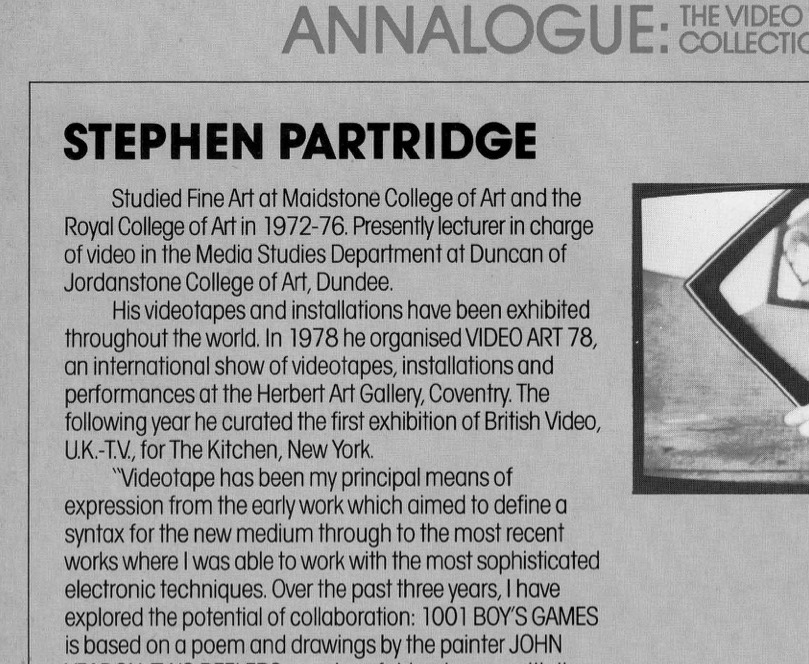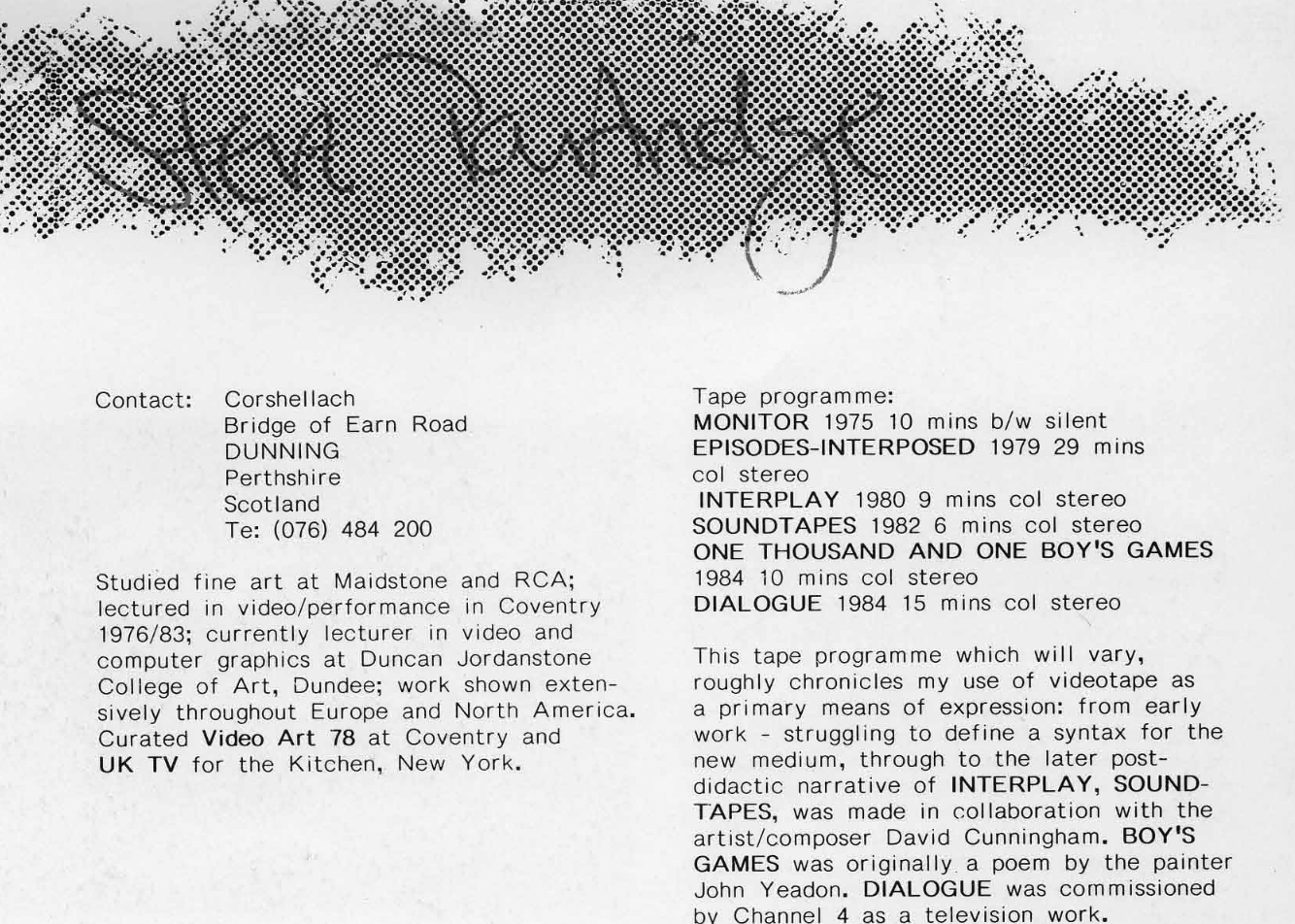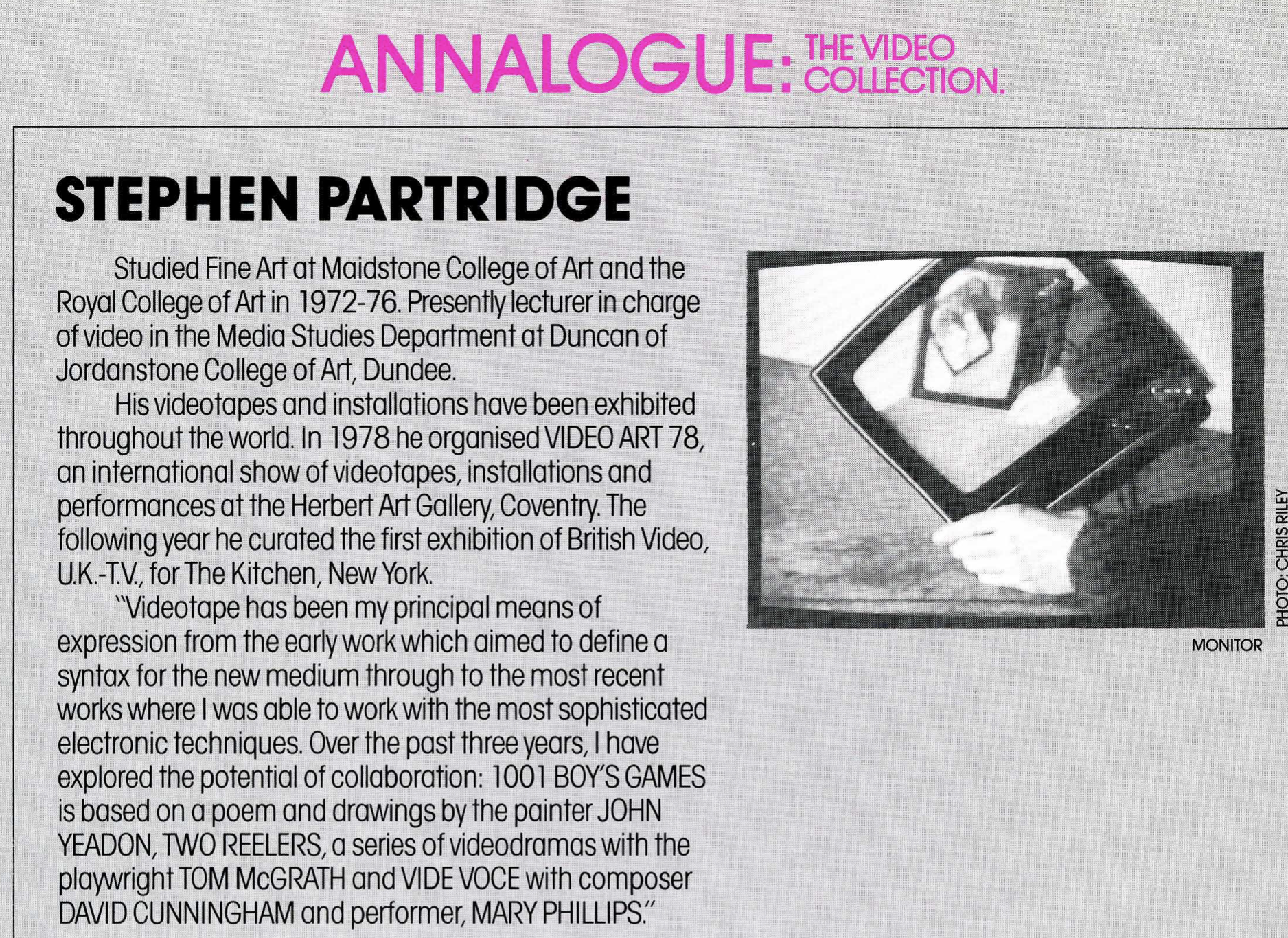Monitor (1974)
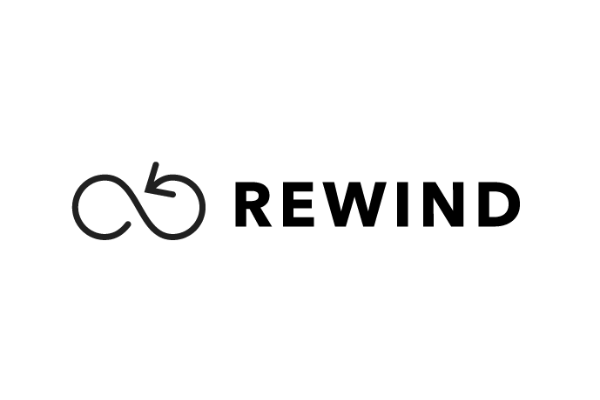
Creator:
Partridge, Stephen-
This work is part of the rewind archive.
Duration: 10 mins (original)6 mins (remastered 1993)
Year: 1974 (1990 as installation)
Original formats:1/2" EIAJ Type 1
Media types:Video
Broadcast: Artists TV Network Soho TV, New York 1979
Funding source: Self
First exhibited: The Video Show, Serpentine Gallery, 1975
Technical details: Single Screen Black& White Videotape, Silent. Made at Maidstone College of Art, Kent
Quotes
“Partridge’s first works, which still hold good today, and continue to inspire new generations who see them, were essentially performance pieces. This was before the age of edit-suites, when crude splicing was the only option to straight duration and when all video-pictures were grey and visibly ‘degraded’. The image-word pulsing of Easy Piece, 1974, was made by fading in and out the key word of its title – ‘Easy’ – spoken on the soundtrack by a woman’s voice. Again, video’s real-time recording and instant playback – which most evidently made it not film – impelled the still stunning manipulations of Monitor, 1975, with its deep regress of angled tv’s in a sequence of chinese boxes, frames within frames. This was live art underscored by basic playback. Like much of the work to come, both pieces assert their modernist origins. The flat picture-plane of Easy Piece, with its printed word as visual icon, telescopes a fifty-year history from cubism and abstract art to postwar dada. Monitor goes further as it de-realized the object – the monitor itself – on which the viewer (and the maker as performer) is watching the work. An active diagonal line across the framed space, repeated in the chain of monitors, is now dynamic rather than assertively flat. The logic of tautology or self-embedded system us at the core of both pieces, but this philosophical weight is carried with ease – not least by mapping such formal concerns onto the viewer’s activity and space.” -Al Rees
“He characterises his early work as a search for a syntax and formal language; the first available video/TV equipment was crude but, paradoxically, this afforded a freedom to push the boundaries and capability of the system and its processes. In so doing his understanding of the physical properties and the underlying technology became finely tuned and laid the foundation of his art practise. For SP the technical realisation is intimately related to the idea and aesthetic, the one informing the other in an interdependence which remains a primary characteristic of his work.” -Anna Ridley
‘Monitor is another important early work by Partridge which demonstrates his interest in structuralism. Structuralist analysis was of great interest to many artists at this time because it provided new and rigorous ways of thinking about art as a form of language. Its basic claim is that all signs (such as words, images, clothes, gestures, and so on) operate within systems (or structures) which are governed by rules. Thus it is not only words which function within the structure of a language, but all signs – there is a language of clothes, a language of the body, a language of painting, a language of sculpture, a language of film. Partridge’s quest in Monitor (as in Easy Piece) is to find a language of video.
In a sense, these structured language systems are like games which have their own laws and rules of conduct. Just like the moves within a game (football, chess, cricket, snooker, for example), the meaning of any sign only makes sense when seen in relation to the rules which govern its use. From the structuralist point of view, the sign (the move in a game) means nothing by itself; it has to be understood in relation to all the other possible signs (or moves) within its rule bound system (or game). There are two major consequences to this claim: first, it means that all signs derive their meaning from their relation to – or, to put it more precisely, their difference from – all other signs within the system they occupy; second, it means that these signs refer inwardly to themselves before they refer outwardly to the external world. Another way of putting this would be to say that all languages are primarily “self-reflexive” structures.
In Monitor Partridge is looking to find those structures which characterise the language of video. In order to do this, he has to make video turn in on itself: he has to make the medium of video “self-reflexive”. His most obvious way of doing this in Monitor (apart from its title!) is to turn the camera onto the monitor itself, so that the subject of the video becomes itself. This alone, however, would not be enough to establish the unique properties of video; there is no reason why a film camera could not do the same thing. What makes video so special, however – what distinguishes its language from other kinds of filmic language – is that it can record and transmit simultaneously. There is no time delay. This can lead to the special phenomenon of feedback. When the video apparatus is turned on itself, it can produce an infinite series of repeated images, each nestled within the other like Chinese boxes. This effect thus mirrors that very same condition of self-reflexivity which forms the basis of language according to structuralist analysis.
Look more closely at Monitor, however, and you will see that the effect of feedback has actually been ‘faked’. Partridge has not simply presented a novel and quirky technical effect of the video medium. Like a mechanic he has dismantled it to provide a thorough examination, and then, like a poet, reassembled it in unexpected ways. The slightly different speeds at which the monitors are rotated in each of the images introduce an element of variation and syncopation which contradict the standardised effect of simultaneity which occurs within ordinary feedback. In other words, Patridge has incorporated the crucial element of difference into video’s self-reflexive feedback system. This element of difference – without which systems of language would fail to function – is further enhanced by the differently angled position of the monitors in each image. The interlaced patterns of time and space which result from these subtle modifications give Monitor a visual fascination which perfectly matches its intellectual clarity.’ interpretation by John Calcutt.
Artwork Information
Videotapes by British Artists, Conceal, The Kitchen New York. Document detailing biography and works by Steven Partridge.pdf here
‘Annalogue: The Video Collection’ – artist information leaflet detailing biography and current artistic practice, includes information on the work ‘Monitor’.pdf here
‘Videotapes by British Artists – Galleria del cavallino, san marco 1725 venezia’, a programme of videotapes and installations, 1977. Includes informtion on ‘Monitor’.pdf here
‘Stephen Partridge’, Brochure/poster for exhibition in IKON Gallery and article by Hugh Stoddart, 2nd-24th January 1981.pdf here
‘Stephen Partridge’, notes for ‘Video Artists on Tour’ card, undated. page 2 tape programme details with short biography, c.1985.pdf here
Interpretive texts written by various suthors to accompany the exhibition at Dundee University and in Centrespace, VRC, Dundee, includes information on ‘Monitor’.pdf here
Catalogue that accompanied the exhibition ‘Stephen Partridge – Inaugral’, Duncan of Jordanstone, 20 March – 15 May 1999. With information on earlier works including ‘Monitor’.pdf here
Catalogue for ‘Video Art 78’, an international festival of video art, Herbert Art Gallery, Coventry. Includes information on ‘Monitor’.pdf here
Essays and Articles
‘Steve Partridge’, article with quote by Robert Arn from Artscanada, 1973.pdf here.
Article on Partridge and Elaine Shemilt’s more recent work ‘Chimera’, exhibited at Centrespace, VRC, Dundee, with mention of earlier works by Stephen Partridge including ‘Monitor’.pdf here
Article from Studio International, 1976 – Stephen Partridge discusses the process of video, with information on his work ‘Monitor’.pdf here
Article from Studio International, 1976 ‘Video – Report by Tamara Krikorian’. Krikorian reports on two events in Glasgow – ‘Symposium: The future of video in Scotland, Event: Towards Defining an Aesthetic, Third Eye centre’. Includes information on the work Monitor.pdf here
Other
‘Stephen Partridge’, notes for ‘Video Artists on Tour’ card, undated. pdf here
-
Monitor
-



